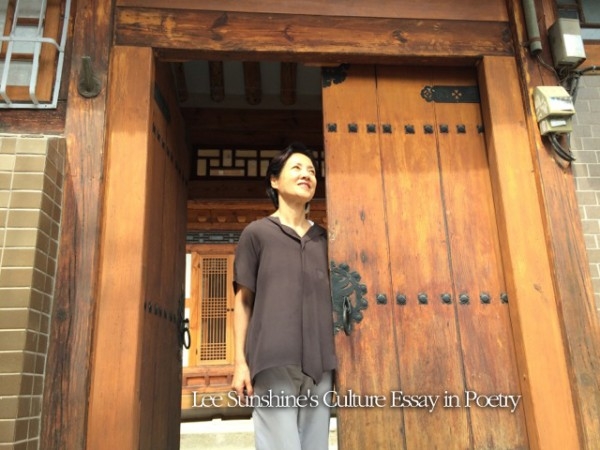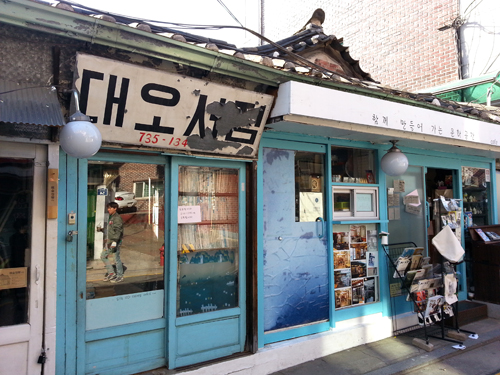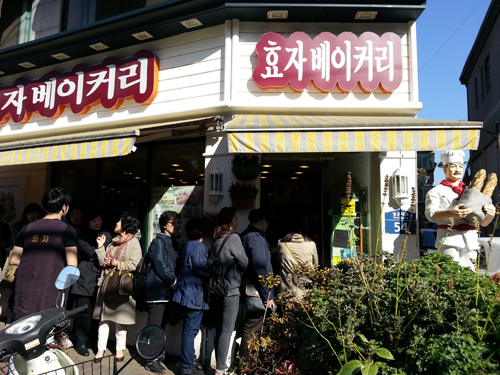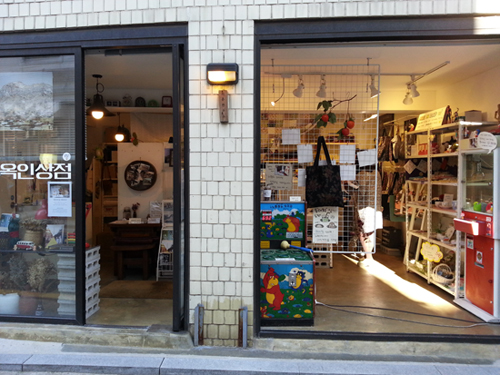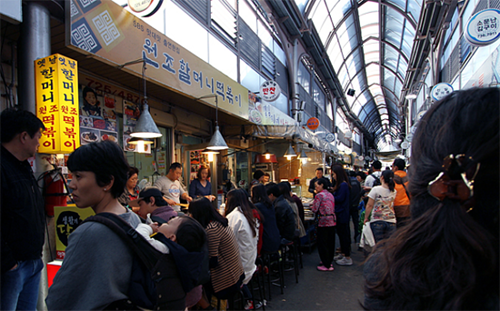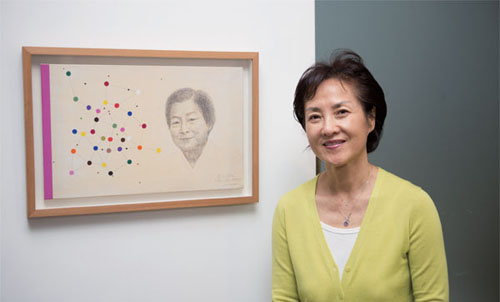The Story of SeoChon
Seochon is my hometown and my originaldomicile. The current address is the old-fashioned 90 Pirun-dong, Jongno-gu.Located at the heart of the city, it is tranquil and peaceful as if it were inthe periphery. Seochon in the literal sense means"Village of the West" due in part to the fact that it is at the footof Inwang Mountain thus it was called Mt. Seo. Although some call this myhometown, Sejong Village, a birthplace of King Sejong the Great who invented theKorean Alphabet. Throughout the years, as a villagelocated close to Gyeongbok Palace, Seochon was home to many scholars, contemporaryas well as classical writers and artists. A peaceful and salubrious villagethat we came back to quite some time ago. The alleys are so maze-like that everycorner of the village interconnects this way or that. There are two traditionalmarkets, Tongin Market and Geumcheon-gyo Market. Nearby is Sajik Park, anarchery field, a children’s library, and the Jongno library. There are an arrayof schools in the vicinity with long traditions such as Gyeongbok High School,Gyeonggi Commercial High School, Baewha Girls’ High School and Baewha Women’sUniversity. Mt. Inwang stands above on restless gaze over this our “Seocheon.” This is a place my heart reminisced offond memories ‘home-sick’ while studying in the States for 20 years. Uponreturn back, many people left for Gangnam whether it was for the schools or becauseof the rising real estate prices. My hometown of love had since changed fromits glorious years into a hopelessly old village where property prices droppedlower to avail to low-income families despite it being at the heart of thecity. My heart weighed with worries for my mother who firmly insisted onstaying in this shivering cold HanokKorean non-insulated house over 300 years of age. Many years have passed since then and nowa miracle is unfolding. Suseong-dong Waterfall which can be found if you followthe road of Nusang-dong has been restored to its original state after manyyears of construction. Once again, the waterfall flows just like the paintingsof Gyumjae Jung Sun. The people who had left for Gangnam are now coming back aftera number of decades saying that this old village is likeable. Seochonis being filled up with the literature, arts, architecture and various othercultures. Alleys, diverse foods, and shops have started opening. Publishers,film companies, galleries, fashion shops and restaurants have opened up, andTongin Market is being crowded with shoppers. Atime for Seochon’s renaissance as a trendy cultural mecca has blossomed. I used to believe that my mother who hadbeen recognized early on by the neighboring country for her poetry was wrongbut now I see that she was right. It was long after my mother had passed awaythat I learned of my mother's true spirit and love behind, not abandoning thisplace called home despite the loneliness and coldness. This historical,architectural, as well as a cultural monument that has existed since the middleof the Yi Dynasty. Not only Son Hoyun but also Yi Sang,Yoon Dong-ju, and Noh Chun-myung whom I met when I was a child as well asChunwon, Lee Gwang-su, have all lived in this village. Not only Gyumjae Jung Sun,a renowned artist of the Joseon Dynasty, artists Lee Sang-bum, Park No-soo andChun Kyung-ja from whom my mother purchased a painting called “Geumgye” havealso lived in this village. Every morning, I saw Kim Dong-jin, one of the mostfamous Korean composers who composed “Gagopa, I long to go” He used to take walksin hasty steps passing in front of my house until his death at the age of 97 in2009. He used to visit our house in Pirun-dong to see my father Lee Yun-mo withwhom he played violin in Pyungyang in their teens. The exploration of Seochon, a hidden gemof Seoul, begins from looking around “the house of the mother and daughter poets,Son Ho-yeon and Lee Sunshine” the house of Poet Lee Sang, the private boardinghouse of Poet Yun Dong-ju, and the Gallery of Park No-soo. Follow it byvisiting the hanok in Nuha-dong wherethey shot the scene of the first love of Seo-yeon and Seung-min in the 2012Korean famed film “Architecture 101”. Take a stroll to grandmother’s bookshopcalled Dae-o which has lasted for the past 63 years although her secondhandbooks tend not to sell at all. Stopover for delicacies of Chinese noodles placein Yunghwaru that Taiwanese migrants have run for generations over 50 years, ofthe Hyoja Bakery which always has a long waiting line. Visit the traditionalfarmer’s Tongin Market and its history where each President paid visits withoutnotice observing public sentiments during their term of office . Lastly, take anature walk to the painter’s scenery of the Suseong-dong Waterfall. I, a sole surviving poet living in thisvillage for a long time, feel saddened by people who visit only to reminisce the pastfrom the outside appearances of this old town. Tired of high-rise buildings andstandard apartment, they still lack in seeing the true essence of this “Seochon”as they pass through only the streets as like mere travelers of foreigncountries. I only wish that they would take back with them some of the energyby learning about the impressive history and human stories behind this villagethat are hidden here and there. It is less fancy, countrified, and dopybut still a friendly village. I had written about my longed country for yearsin the newspapers when I lived in New York and Washington, D.C. Looking back on,I realize it was this village where I had been brought up and was missing. It is my dire hope that this “Seochon”my hometown retain its historic value as being the representative “classy”cultural hub of Seoul such as that of Shakespeare or Goethe. A town wherehumanity lives on in every corner of the alleys. Where its spirit of theliterature, arts of the past intellectual scholars carry on “living” throughtheir works recited and rejuvenating all visitors of the energy of Mt. Inwangof the Korean Kings in the past. In today’s world of constant changes andinstant gratification, such a place of a nation’s solemn historic pride shouldlive on to take its’ galore for generations to come. When I walk through the alleys that hadonce walked with my mother, her quiet presence lives on that had watched overbulldozers destroying half of her 300 years old house that she tried so hard topreserve even when everyone had previously left. She had kept up her spirit of love and treasuredthe values of the history of this village. This, she softly yet determinedlywhispered in one line of a poem expressed in a house inside “Seochon” during her life. I miss her and I am always thankful toher. I hesitate to leave this house I have lived since I was young, for your images are vivid in every corner Son Hoyun
The House of Poet Sang Yi Bookshop DaeO with 63 years of history
90 Pirun-dong Seoul Korea
|

